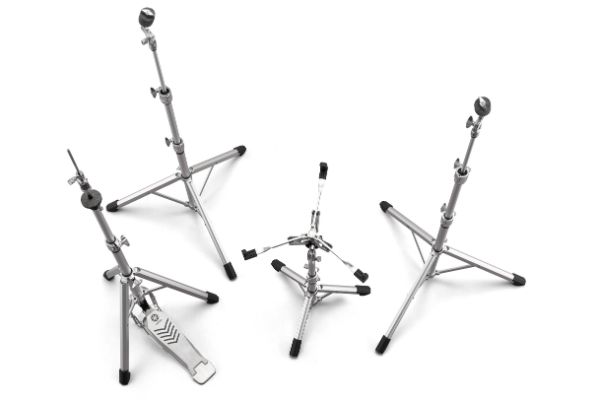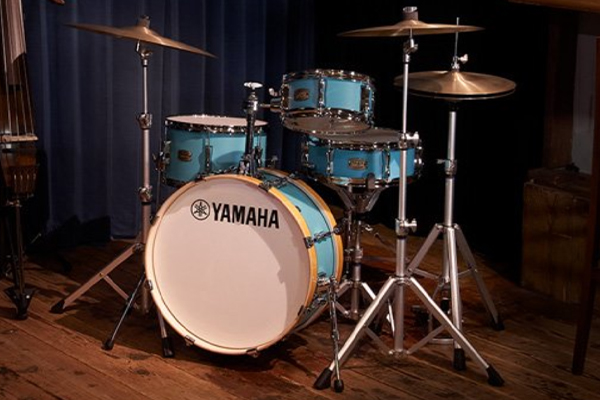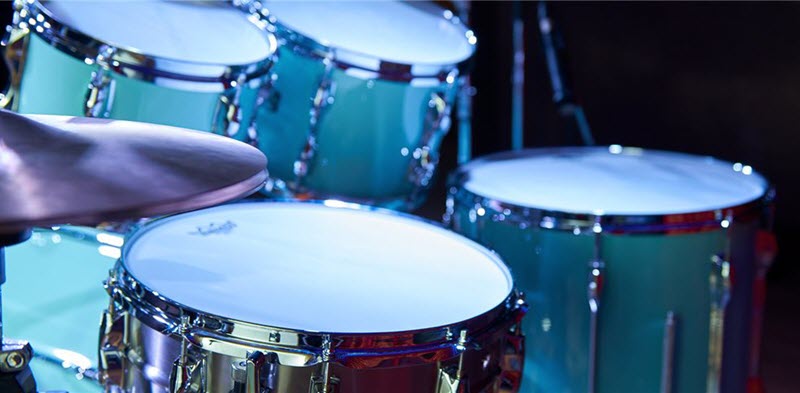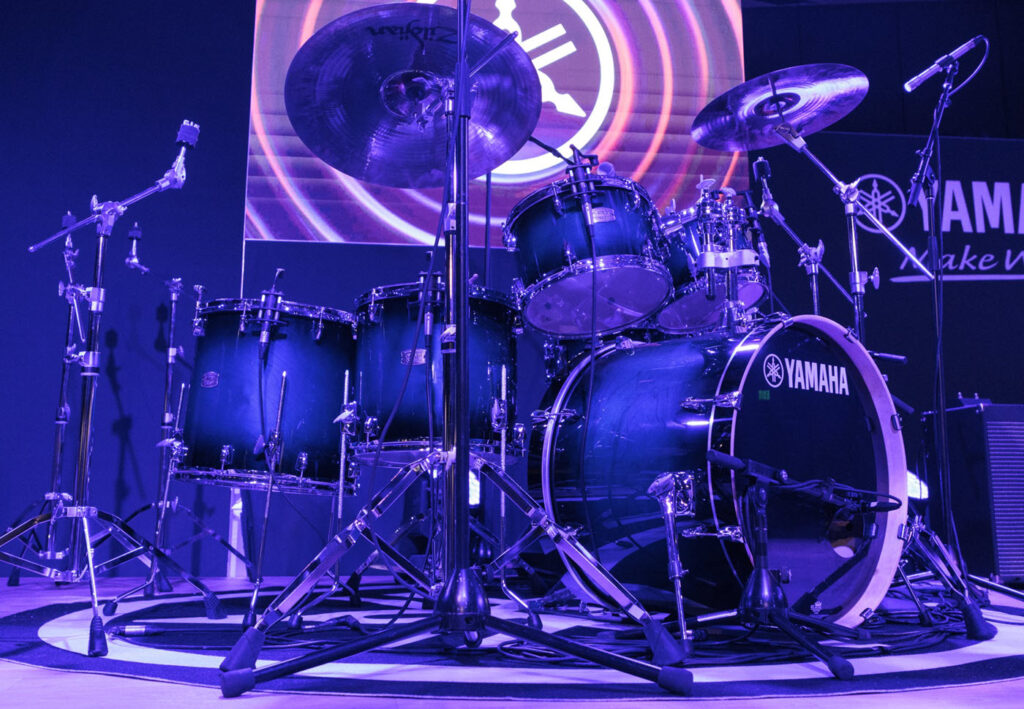Anatomy of a Snare Drum
How well do you know the parts of a snare drum?
Snare drums come in all shapes and sizes. They are used in concert and orchestral music, marching band, pop music and many other genres. The instrument is basically a short cylinder with a drumhead at each end. The top head is struck with sticks and the bottom head is fitted with snares that vibrate sympathetically, giving the snare drum its distinctive “snap.”
Below is an annotated illustration of a typical snare drum, followed by a description of each part. It’s always helpful to become familiar with the anatomy of any instrument you play, especially if there is something that needs to be repaired!
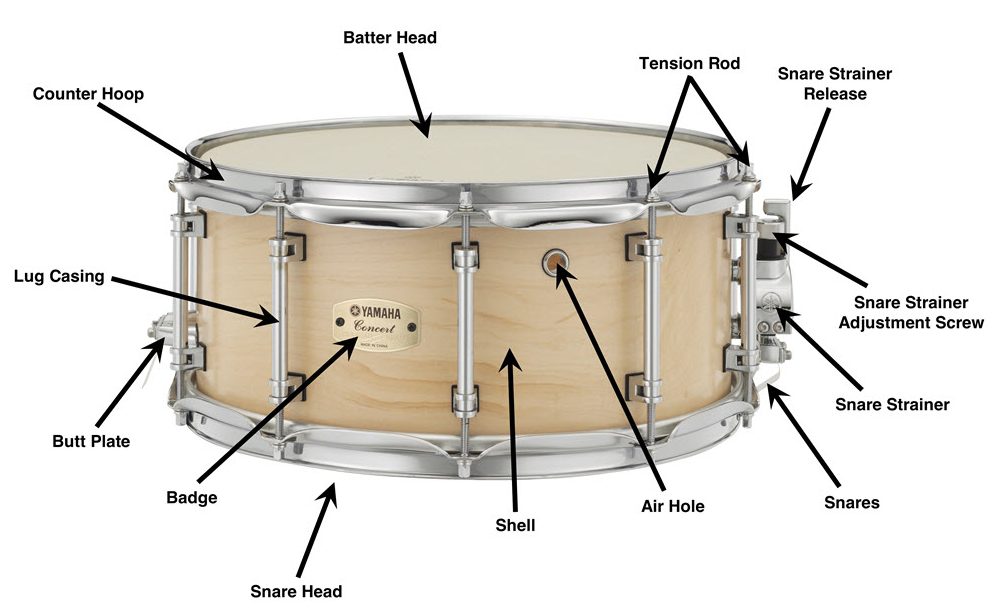
Air Hole: Allows air to escape the cylinder when the batter head is struck.
Badge: The identification plate that is attached to the shell. Information that is found on the badge can include model number, serial number and manufacturer of drum.
Batter Head: The top head that is struck with sticks or brushes. This drumhead is thicker than the snare head (the head on the bottom) to withstand the repetitive playing from the drumsticks.
Butt Plate: This part secures the snares on the shell opposite from the strainer.
Counter Hoop: The rim or hoop that tightens the drumhead.
Lug Casing: This part receives the tension rod.
Shell: The body of the drum. Shells can be made out of wood, metal, aluminum, and other materials.
Snares: Wire, cable, gut or synthetic materials that are stretched across the bottom head to produce a buzzing sound.
Snare Head: The bottom head, also known as the resonant head, is thinner than the batter head (the head on the top). Snares are stretched over the snare head to allow them to vibrate when the batter head is played.
Snare Strainer: The mechanism that includes the snare strainer release and the snare strainer adjustment screw.
Snare Strainer Adjustment Screw: The screw that tightens or loosens the snares.
Snare Strainer Release: The lever mechanism that engages or disengages the snares on the snare head.
Tension Rod: A threaded metal rod that is inserted into the lug casing. The tension rod can be tightened or loosened to get the desired sound of the drumheads.
Click here for more information about Yamaha snare drums.











